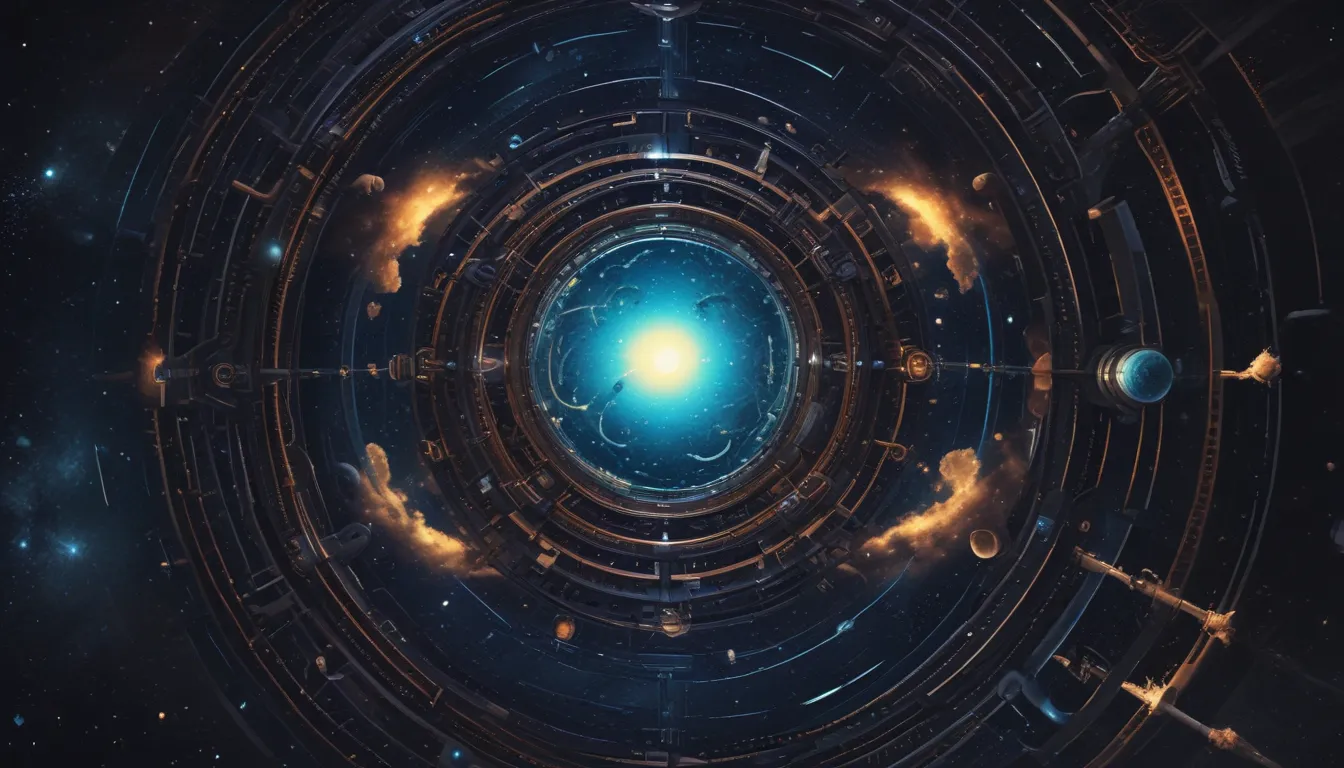The pictures we use in our articles might not show exactly what the words say. We choose these pictures to make you interested in reading more. The pictures work together with the words but don’t take their place. The words still tell you the important facts.
Are you intrigued by the mysteries of the universe, the dance of planets and stars, and the forces that govern their movements? If so, you're not alone. Celestial mechanics, a captivating field of physics, unveils the inner workings of the vast cosmic neighborhood we call home. In this article, we will embark on a cosmic journey to explore the fascinating realm of celestial mechanics. Get ready to be amazed by the intricate interplay of celestial bodies and the awe-inspiring insights they offer.
Unraveling the Mysteries of Celestial Mechanics
Celestial mechanics is like a cosmic puzzle that helps scientists understand how planets, moons, asteroids, and comets move and interact in space. It's a intricate dance of celestial objects, guided by the laws of physics and gravity. This field not only enables us to study the stars but also aids in exploring outer space, predicting eclipses, operating satellites, and much more. Imagine it as the GPS of the universe, guiding us through the vast expanse of the cosmos.
The Foundations of Celestial Mechanics
Isaac Newton, a pioneer in the field of physics, made significant contributions to celestial mechanics with his laws of motion and universal gravitation. These foundational principles revolutionized our understanding of celestial motion, allowing scientists to accurately predict the orbits of planets, moons, and other celestial bodies. Newton's groundbreaking work paved the way for the study of celestial phenomena and the exploration of outer space.
Kepler’s Laws and the Cosmic Dance
Johannes Kepler's laws of planetary motion are fundamental to celestial mechanics. These laws describe how planets move in elliptical orbits around the Sun, offering insights into the behavior of celestial bodies. Kepler's work provides a framework for understanding the intricate dance of planets and moons as they traverse the cosmic stage, following precise paths guided by the laws of celestial mechanics.
The Three-Body Problem and Celestial Dynamics
The three-body problem is a famous challenge in celestial mechanics, involving the complex calculation of three celestial bodies interacting gravitationally. This intricate problem requires advanced mathematical techniques to solve, highlighting the dynamic nature of celestial interactions. By unraveling the mysteries of the three-body problem, scientists gain valuable insights into the dynamics of celestial systems and the forces that govern their motion.
Celestial Discoveries Through Mathematics
Celestial mechanics played a crucial role in the discovery of Neptune, the eighth planet in our solar system. In the 19th century, discrepancies in the orbit of Uranus led astronomers to predict the existence of an unknown planet. Utilizing celestial mechanics, mathematicians John Couch Adams and Urbain Le Verrier independently calculated the position of Neptune, leading to its successful discovery. This groundbreaking achievement showcases the power of mathematics in uncovering celestial phenomena.
The Interconnected Universe: Celestial Mechanics and Beyond
Celestial mechanics is closely related to astrophysics and cosmology, forming a cohesive framework for understanding the universe. These interconnected fields provide valuable insights into how celestial bodies form, evolve, and interact. By delving into celestial mechanics, astronomers gain a deeper understanding of the cosmic web that connects galaxies, stars, and planets, shedding light on the mysteries of the universe.
The Evolution of Celestial Mechanics
As technology advances and our knowledge of the universe expands, celestial mechanics continues to evolve. Scientists are constantly uncovering new insights and refining models to better explain the complexities of celestial motion. From predicting the discovery of exoplanets to understanding the phenomenon of precession, celestial mechanics remains a vital field of research that propels us towards a deeper understanding of the cosmos.
Conclusion: Embracing the Wonders of Celestial Mechanics
In conclusion, celestial mechanics offers a compelling journey through the vast expanse of the cosmos, unveiling the intricate dance of celestial bodies and the forces that shape their movements. By exploring the principles of celestial mechanics, we gain valuable insights into the dynamics of the solar system, the formation of galaxies, and the behavior of distant celestial objects. As we continue to peer into the depths of outer space, celestial mechanics will remain a beacon of knowledge, guiding us towards a greater understanding of the universe and our place within it.
FAQs: Exploring Celestial Mechanics
-
What is celestial mechanics?
Celestial mechanics is the branch of astronomy that deals with the motion and behavior of celestial objects, such as planets, moons, asteroids, comets, and stars. -
What are the main principles of celestial mechanics?
The main principles of celestial mechanics include Newton's laws of motion, Kepler's laws of planetary motion, and the law of universal gravitation. -
How do celestial bodies move?
Celestial bodies move in accordance with the laws of physics, particularly gravity. The gravitational force between two objects determines their mutual attraction and influences their orbital paths. -
What are some important applications of celestial mechanics?
Celestial mechanics is crucial for understanding and predicting the motion of spacecraft, calculating the trajectory of interplanetary missions, and determining the stability of planetary systems. -
How has celestial mechanics contributed to our understanding of the universe?
Celestial mechanics has helped reveal the nature of planetary systems, the origin of comets and asteroids, and the formation of galaxies. By studying the motions and interactions of celestial objects, we gain insights into the fundamental laws that govern the universe.
Celestial mechanics invites us to explore the wonders of the universe, offering a glimpse into the intricate tapestry of celestial motions and interactions. As we gaze up at the night sky, let us marvel at the cosmic dance unfolding before us, guided by the laws of celestial mechanics. Let's continue our cosmic adventure, unraveling the mysteries of the universe and embracing the beauty of the cosmos that surrounds us.






